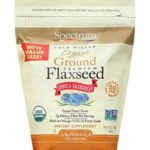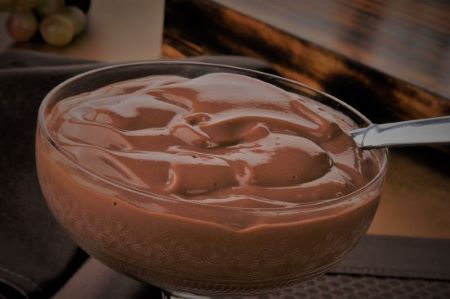Affiliate Disclosure: I may receive a small commission at no extra cost to you, for purchases made via affiliate links. If you decide to support my blog in this way, I thank you!
Introduction
There is nothing to dislike about soy except for the way we produce it in our modern world.
I’ve been vegetarian for years, and I’ve eaten a lot of soy: tofu, tempeh, miso mostly. I’ve never felt anything but great when I eat this food. It’s versatile and absorbs the flavors of the dish you’re cooking.
I use tempeh in marinara sauce to make a spaghetti Bolognese and it adds texture, not to mention plenty of nutrition. I make sautéed vegetables with tofu and brown rice. My family loves my Shepherd’s Pie with tofu that I freeze and thaw, then sautée to bring out a crumbled burger texture needed for this traditional dish. This recipe even wows my meat-eating cousin at Thanksgiving and that’s saying something.
I love to eat so I wouldn’t be eating soy for virtuous reasons. I genuinely like it and believe that it’s healthy,
but there is a lot of confusion around soy these days.
I hear and read “Soy is the worst. Stay away from soy…”
I ask: How can a bean that’s been responsible for sustaining Asian populations for thousands of years be a bad thing?
It has to do with modern farming methods and the poisons used to get rid of bugs…
History
Chinese farmers started growing soybeans around 1100 BC. The Japanese cultivated them soon after the first century AD. In 1765 the British colony of Georgia planted the first soybean in the Americas. They’ve used different forms of pesticides over the years, but today with our ability to change gene structure, scientists design crops to be able to withstand toxic doses.
Miracle Plant?

When you look at the components of soy you could call it a miracle food. It’s a great source of protein, and it’s full of antioxidants that help to prevent aging. Isoflavones (naturally-occurring plant estrogens) in soy help to balance hormones and protect against harmful estrogen mimickers in the environment.
Phyto (plant) estrogens are a good thing, contrary to the misconception. They are adaptogenic which means that if your body has too much toxic estrogen from the environment it will take its place.
Bioflavonoids in soy (which also occur mainly in citrus fruits) help to build collagen and keep skin firm.
In addition, studies show that soy consumption is related to increased bone density in Asian women.
I enjoy the versatility, I read all of the good research and understand what it can do for my body, so why shouldn’t I eat it?
GMOS
For the last 20+ years, US companies have crossed the genes of the soybean with undesirable organisms to form a genetically-modified soybean. Decreased nutritional value, toxicity and hidden allergens are the result.
One such GMO was a form of soybean produced to withstand a powerful pesticide called Roundup. Monsanto’s “Roundup-Ready Soybean” first appeared on the market in 1996. “Roundup-Ready”, doesn’t that say it all? It is ready to withstand dose after dose of Roundup until it is saturated and the bugs don’t stand a chance.
Would you want to eat tofu from that particular crop of soybeans? I wouldn’t either.
The active ingredient in this weed killer – glyphosate – has been linked to cancer, gluten intolerance, and birth defects. So far 9 EU countries have banned the use of Roundup, including the Czech Republic, Austria, France, and Italy. Germany will ban it completely by 2023.
The United States still uses Roundup, although many state and local municipalities have banned its use. (I found a half-used jug of this stuff in my father’s garage and told him never again – yikes.)
Farmers are able to easily take care of their pests without worrying about killing their harvest but my guess is they’re not thinking about the end-user.
This is not a soybean you want on your dinner plate. It is crucial that you see “NON-GMO” and/or “USDA ORGANIC” on the label of any tofu, soy milk, miso, or tempeh that you buy.
BOTTOM LINE ON BENEFITING FROM SOY FOODS:
*Be sure to choose soy products from companies that use only organic soybeans. The package should read USDA Organic and/or Non-GMO.
*Use primarily the whole/minimally-processed forms of soy such as Tempeh, Tofu, Miso, Soy Milks and whole soybeans/edamame.
*Avoid highly processed products such as soy protein powders with texturized soy protein, also called soy protein isolate or texturized vegetable protein. These are indigestible and often made from GMO/non-organic sources.
*Read labels on packaged foods. Manufacturers hide soy everywhere in processed foods, just like sugar. You don’t just find them in meat substitutes, where you’d expect to find them. I’m talking baked goods, soups, canned vegetables, frozen meals, condiments, etc. These are most likely NOT from non-GMO sources. Do yourself a favor and avoid them whenever possible.
(Note: I will occasionally eat a soy burger or hot dog from a company like Light Life, who uses only non-GMO tofu. I prefer whole forms of soy nonetheless because as I said above, processed soy may cause indigestion.)
HEALTH-ENHANCING QUALITIES OF SOY:
*Balances hormones
*Protects against cancer
*Contains antioxidants to prevent aging
*Is a Great form of protein
*Builds collagen and strengthens bones
*Is a Good natural source of prebiotics and probiotics from fermented soy foods such as Tempeh, Miso, Natto and Soy Sauce (or Tamari if you’re avoiding wheat.) These pre/probiotics are beneficial bacteria and types of fiber that aid the growth of good bacteria in the gut and provide numerous health benefits.
People indeed should like soy and eat it freely, but choose the source wisely, and message me if you’d like my recipe for Shepherd’s Pie:-)
RECIPE FOR EASY VEGAN CHOCOLATE PUDDING:
Ingredients:
12 ounces firm silken tofu
-2 round tablespoons of organic unsweetened cacao powder (I like Navitas Organics)
-1/2 teaspoon vanilla extract
-1 tablespoon ground flaxseed (I like  Spectrum Essentials.)
Spectrum Essentials.)
-2.5 tablespoons Erythritol (Natural, plant-based sweetener), OR real Maple Syrup.
-Sprinkle of Cinnamon (optional)
Instructions:
Blend all ingredients in a blender. Spoon into small pudding dishes. Place in the refrigerator for 20 minutes to allow to settle.
Enjoy this extremely healthy and delicious dessert!





